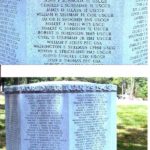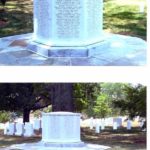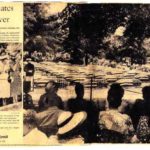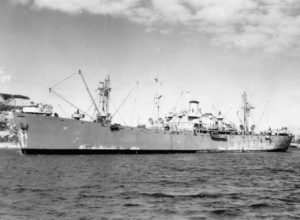 Anaheim High lost two 1940s classmates in what was the largest single disaster suffered by the United States Coast Guard in World War II, when the USS Serpens exploded in Guadalcanal on the night of Jan. 29, 1945.
Anaheim High lost two 1940s classmates in what was the largest single disaster suffered by the United States Coast Guard in World War II, when the USS Serpens exploded in Guadalcanal on the night of Jan. 29, 1945.
Charles E. Graeber from Class of ’40 and James D. Selaya from Class of ’42 were among the 250 men who died in the explosion that destroyed the 14,250-ton ammunition ship.
Both Graeber and Selaya were U.S. Coast Guard sailors and most likely good friends who grew up together in, then, small town Anaheim.
Charles, who was called by his nickname “Chuck,” was born May 7, 1922, to Ernest and Veronica Graeber. The family home was located at 408 West Oak Street. Ch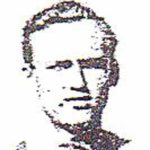 uck played football and basketball. He served as a Pharmacist’s Mate 3rd Class.
uck played football and basketball. He served as a Pharmacist’s Mate 3rd Class.
 Selaya, who was called Jim or Jimmy by his family and friends, was captain of the B Football Team, ran track for three years and was the school’s feather weight boxing champion.
Selaya, who was called Jim or Jimmy by his family and friends, was captain of the B Football Team, ran track for three years and was the school’s feather weight boxing champion.
Of the 250 men who died in the explosion, 193 were U.S. Coast Guard sailors; 56 U.S. Army soldiers; and Dr. Harry M. Levin, a U.S. Public Health Service surgeon. Of the 193 Coast Guardsmen, 17 were regular Coast Guard and 176 were reservists.
There were 10 survivors. Lieutenant Commander Perry L. Stinson, commanding officer of the USS Serpens, another officer and six crewmen were ashore on administrative business. Two crewmen who were onboard survived the explosion: SN 1st Class Kelsie K. Kemp of Barron Springs, Virginia, and SN 1st Class George S. Kennedy of San Marcos, Texas. Seaman Kemp and Seaman Kennedy were awarded the Purple Heart by Rear Admiral L.T. Chalker, the Assistant Commandant of the U.S. Coast Guard.
It took several years to confirm the cause of the explosion. In July 1947, the Coast Guard still thought an enemy attack had caused the blast. However, by June 10, 1949, it was determined as an accident that occurred when servicemen were loading depth charges. The ship, anchored off Lunga Beach in the British Solomon Islands, was preparing to deliver ammunition for the Battle of Okinawa, the last major battle of World War II, and one of the bloodiest.
The 250 remains were originally buried at the Army, Navy and Marine Cemetery in Guadalcanal with full military honors and religious services. The remains were repatriated under the program for the return of World War II dead in 1949.
 The mass recommittal of the 250 unidentified dead took place in section 34 at MacArthur Circle in Arlington National Cemetery. The remains were placed in 52 caskets and buried in 28 graves near the intersection of Jesup and Grant Drives. Two gravesites were reserved for the memorial inscribed with their names.
The mass recommittal of the 250 unidentified dead took place in section 34 at MacArthur Circle in Arlington National Cemetery. The remains were placed in 52 caskets and buried in 28 graves near the intersection of Jesup and Grant Drives. Two gravesites were reserved for the memorial inscribed with their names.
About 1,500 people attended the reinternment service on June 15, 1949. Catholic, Jewish and Protestant chaplains officiated. The U.S. Marine Corps Band played Pasternak’s arrangement of Taps. A bugler echoed Taps in the distance. The U.S. Navy also participated. To conclude the service, a Gold Star Mother, escorted by an American Legionnaire, placed a white carnation on each casket.
In a newspaper account of the service, one witness described it as “one of the most elaborate military services” accorded our fallen heroes. “Words would have been inadequate to express the deep gratitude and admiration…in the hearts of [all] who witnessed the service.”
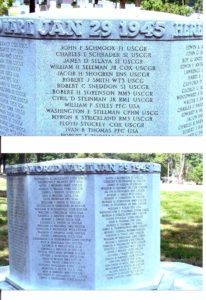 The USS Serpens Monument was dedicated on Nov. 16, 1950.The octagonal monument occupies two grave spaces in section 34. About 100 relatives and 200 others attended the dedication. Participating units included a color guard from the U.S. Coast Guard Cutter DUANE, a color guard from The Old Guard at Fort Myer, Catholic, Jewish and Protestant chaplains, and The United States Army Band (Pershing’s Own). Vice Admiral Merlin O’Neill, Commandant, U.S. Coast Guard gave a brief address that include the statement: “We cannot undo the past, but we can insure that these men shall be respected and honored forever.”
The USS Serpens Monument was dedicated on Nov. 16, 1950.The octagonal monument occupies two grave spaces in section 34. About 100 relatives and 200 others attended the dedication. Participating units included a color guard from the U.S. Coast Guard Cutter DUANE, a color guard from The Old Guard at Fort Myer, Catholic, Jewish and Protestant chaplains, and The United States Army Band (Pershing’s Own). Vice Admiral Merlin O’Neill, Commandant, U.S. Coast Guard gave a brief address that include the statement: “We cannot undo the past, but we can insure that these men shall be respected and honored forever.”
Click here to view a list of names of those who lost their lives in the USS Serpens disaster.
